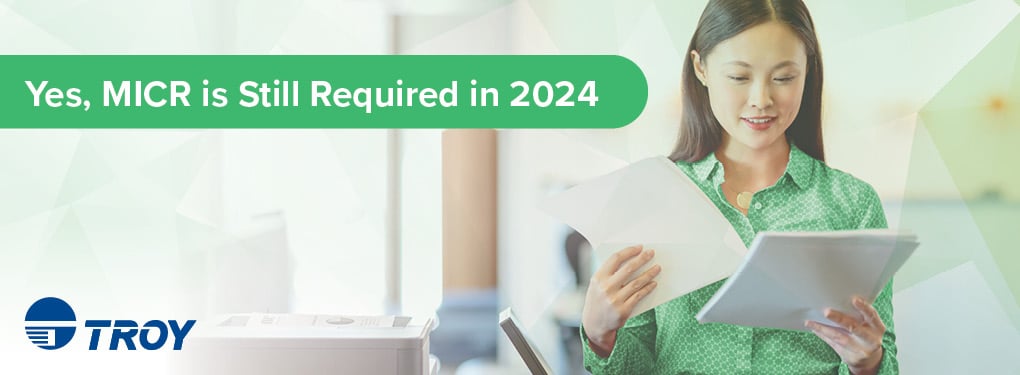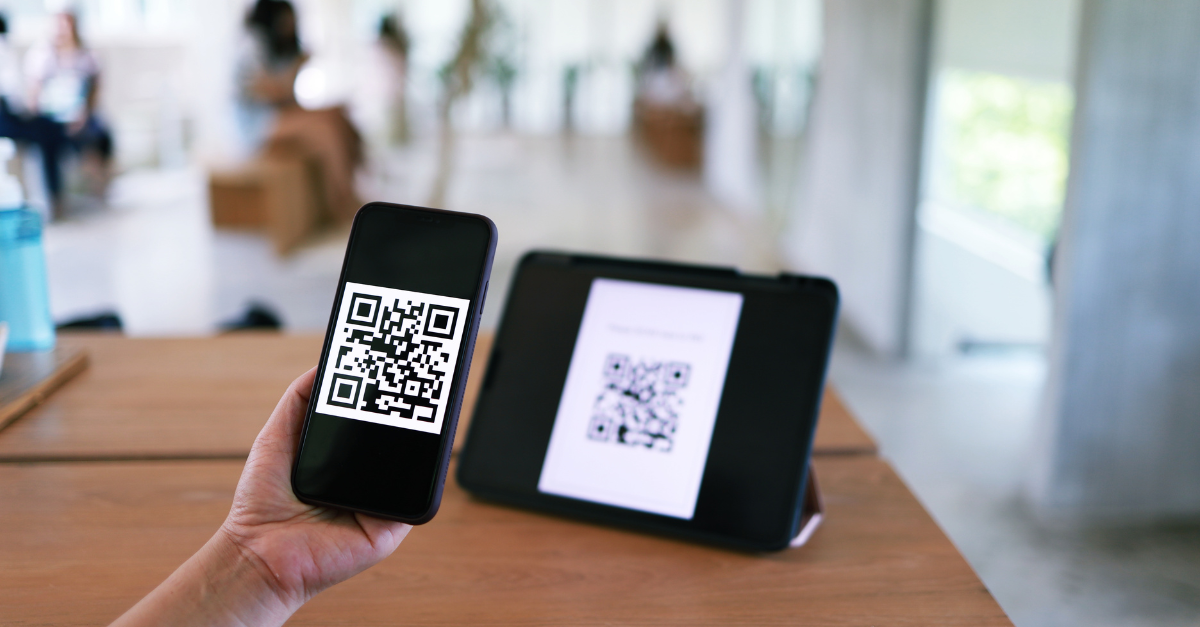Do I Need a MICR Printer? Yes! MICR is Still Required!

With employees working from home and businesses looking to efficiently print checks, clients are asking the question: Do we need a MICR printer? The short answer is, Yes!
If you’re printing checks on blank check stock, you certainly need a MICR printer and the security features that are exclusive to high-quality, OEM MICR toner.
While it’s possible to print checks using a standard laser printer, without the proper fonts and features, you can run into all sorts of problems. Checks won’t meet banking standards and could be rejected by a bank. In addition, without security features, your printed checks are vulnerable to fraud and can put your organization at risk of financial harm.
The bottom line is: Yes, organizations still need MICR printers, especially in 2024!
Check Fraud is Still a Threat
Check fraud is the most dominant form of payment fraud, above credit card fraud, ACH fraud and wire fraud¹. A full 74 percent of companies experienced actual or attempted check fraud in 2019, an increase from 70% the year prior¹. Fraud had been decreasing over the last few years. In times of change and unrest, like we’re experiencing now with COVID, fraudsters take advantage of an organization’s turmoil.
Clever fraudsters constantly try new techniques to beat the banking system and steal money. While one might expect banks to be liable for these losses, revisions in the Uniform Commercial Code (UCC) have shifted the liability from the bank to the party in the best position to prevent the loss. Today, the losses are shared between a bank and its customer based upon each party’s comparative negligence.
7 Reasons Why Organizations Need a Dedicated MICR Printer
As long as check fraud persists, financial institutions and businesses should explore all security measures available to prevent check fraud. Fortunately, there are ways to reduce the risk of check fraud, starting with integrating distinct security measures at the printer level:
1. MICR is required by the Federal Reserve
-
- The MICR line is the series of numbers and characters printed at the bottom of the check that includes all of the checks important information – including account, routing, and check numbers. This is a core characteristic of the check and allows the data to be captured electronically. Data not printed using MICR may not scan properly resulting in clearing issues. This may result in manual entry at the bank and processing fees for you.
2. Printer Security Features
-
- First, password protection is critical to prevent unauthorized access to MICR toner/ink and secure fonts, user-specific signatures, and form overlays.
- Additional security beyond password protection can include a front panel lock, requiring the user to enter a combination prior to printing.
- Encryption and decryption capabilities encrypt the print data stream, protecting it while it is being transmitted to the printer, where it is decrypted just before being printed – one of the highest levels of security technology available.
- Engineered, model-specific printer tray locks, along with tray shielding for the back access panel, can protect and manage check stock.
3. Disable Jam Recovery & Toner Sensing
-
- Auto jam recovery disablement is important to prevent multiple copies of a check from printing. This ensures the printer processes the job only once and counteracts fraud by disallowing the printing of multiple copies of a check.
- Toner sensing technology detects when MICR toner levels are low and notifies you before continuing. This helps ensure each payment is printed to bank specifications and optimized for maximum reliability and readability.
4. Audit Features Create Transparent Checks and Balances
-
- Audit trails are helpful in creating user-defined reports of check printing activity for checks and balances.
5. Fine Tune the MICR Line
-
- The placement of the MICR line is very crucial to successful readability. Financial institutions should also be able to account for minor variations between printers to prevent bank rejection of checks; therefore, being able to fine tune the position of the MICR line is essential.
6. Security Fonts are a Key Element in Fraud Mitigation
-
- A secure, numeric font should be leveraged as an additional layer of security on the MICR document. This type of font is very difficult to alter because of a special background, minuscule text, and numeric print embedded in the amount line of the check.
- A microprint font adds yet another layer of security at the document level. The extremely small type font embeds personalized micro text and numbers into each check.
7. Complementary MICR Toner with Tamper-Resistant Features
-
- MICR toner with high adhesion guarantees consistent character quality. It also deters fraud since printed data is not easily scraped or washed without damaging the check paper.
- TROY MICR Toner Secure prevents check tampering by releasing a red stain if chemical alteration is attempted. Standard toner can easily be scraped or chemically washed from a check, even on some of the most secure check stocks.
Since check fraud is still the number one form of payment fraud, it is not worth the risk using a standard laser printer and plain printer toner. We believe check fraud will increase in 2024. So, yes, now more than ever MICR is required.
MICR printers are available for low to high volume print needs, and with a variety of security features. Talk with one of our MICR experts today to find a solution that fits your needs and your budget.
Related Posts

Bank Tellers Are Going Away. What's Next?
The landscape of banking has undergone significant transformation. One notable shift is the steady decline in bank teller jobs, a trend driven by technological advancements,..

Platform Revolution: 4th Generation of Core Banking
The 4th generation of core banking has arrived, bringing with it a platform revolution that is reshaping the banking industry. This transformation heralds the transition from..

5 ATM Features Banks Need in a Cashless Society
As contactless payments, digital wallets, and online banking increasingly become the norm, the reliance on cash is steadily diminishing. This shift towards a cashless society is..




Leave a Reply